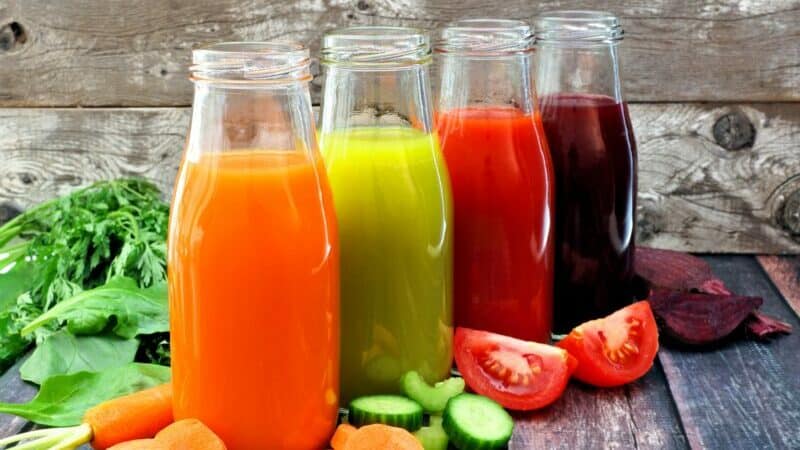Juicing is on the fast track from fad to full-on health craze. Thanks to an explosion of juice bars and celebrity endorsements, satisfying that thirst for greens, super fruits, celery, or beetroot juice straight up is the new black. Healthy as these juicy concoctions may seem, there’s a tall order of hype muddling science with slick marketing.
Juicing can be a great way to get much-needed nutrients from fruits and vegetables, especially when most Americans fall short of the recommended five daily servings, which evidence suggests may help prevent chronic diseases. According to a study published in the journal Nutrients (2021), consumption of 100% fruit juice is a source of nutrients, including phytochemicals, plant compounds associated with health benefits. A large body of evidence shows that juice is a part of a balanced diet offering reduced risk of many diseases, such as cancers, neurodegenerative diseases, and cardiovascular diseases.

While juices squeezed fresh from whole ingredients provide many of the valuable vitamins, minerals, and phytonutrients of whole fruit, the healthy fiber, which includes the skins and their high concentration of phytochemicals and antioxidants, is discarded. Without fiber, the body absorbs the sugar in juices more quickly, which can spike blood sugar levels. In addition, most juice calories come from carbohydrates, packing a lot more sugar from fruits, and even some vegetables, than most people realize.
Among the many claims of the superiority of juice, juicing health craze proponents say the body absorbs nutrients from juice more easily than from whole fruits and vegetables, that juice removes toxins from the body, boosts the immune system, aids digestion, and helps with weight loss. There is no sound scientific evidence that says extracted juices are any healthier than juice from the whole fruit and vegetable, no matter the marketing claim. In addition, manufactured juices must, by law, be pasteurized, which means they are heated to high temperatures, which studies show diminish nutrients, some as high as 70%.
Go ahead and get your greens — or purples, yellows and pinks — in a glass. Juicing can be a fun and tasty way to ramp up fruit and vegetable intake as long as it’s balanced in a diet that includes fiber, lean proteins, and healthy fats. When buying packaged juices, be sure to check labels for unwanted ingredients like added sugars. Since homemade juices have no added preservatives, they will not last as long as the store-bought variety. When juicing at home, stick with small batches to consume right away.
Learn more about juice here! 5 Rules to Choose Healthy Juices
Reprinted with permission from Environmental Nutrition, a monthly publication of Belvoir Media Group, LLC. 800-829-5384. www.EnvironmentalNutrition.com.
© 2023 Belvoir Media Group. Distributed by Tribune Content Agency, LLC.
